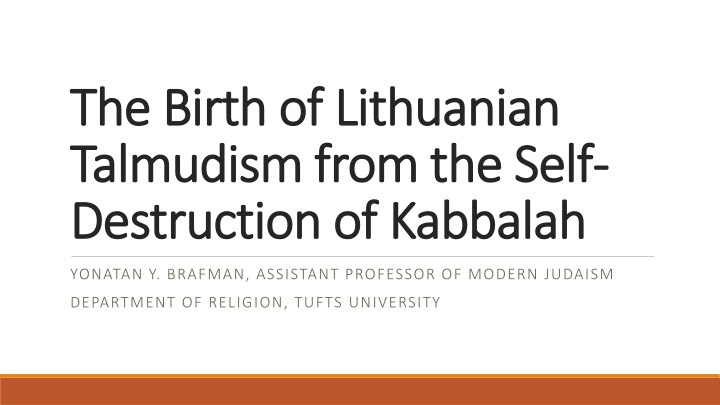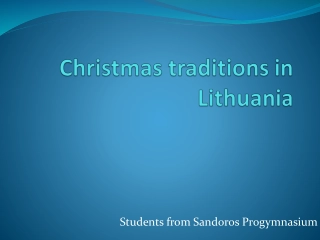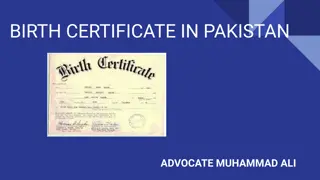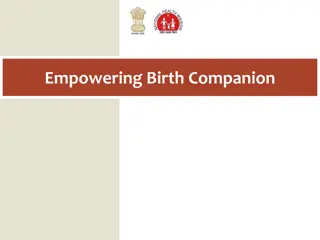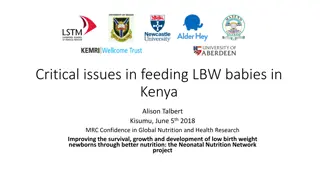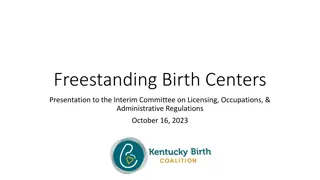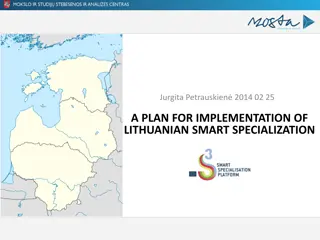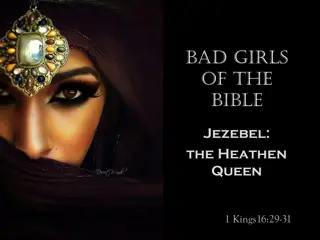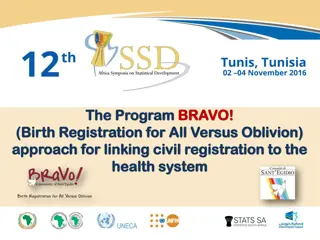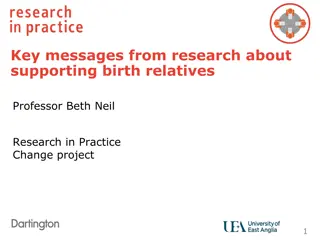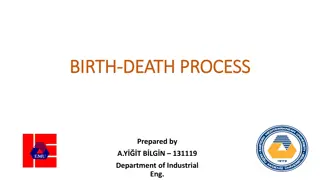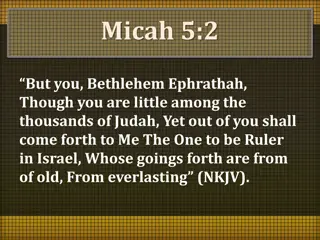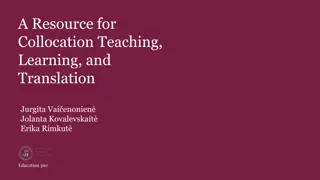The Birth of Lithuanian Talmudism: Destruction of Kabbalah
Birth of Lithuanian Talmudism from self-destruction of Kabbalah explored by Yonatan Y. Brafman, highlighting the impact of conceptualizing Halakhah on modern Judaism. The discourse of modernity and Jewish law's role in continuity or discontinuity are examined through an overview setting the stage for understanding the theological and modernity aspects in Judaism, including the Yeshiva movement and Hayyim of Volozhin's influence.
Download Presentation

Please find below an Image/Link to download the presentation.
The content on the website is provided AS IS for your information and personal use only. It may not be sold, licensed, or shared on other websites without obtaining consent from the author.If you encounter any issues during the download, it is possible that the publisher has removed the file from their server.
You are allowed to download the files provided on this website for personal or commercial use, subject to the condition that they are used lawfully. All files are the property of their respective owners.
The content on the website is provided AS IS for your information and personal use only. It may not be sold, licensed, or shared on other websites without obtaining consent from the author.
E N D
Presentation Transcript
The Birth of Lithuanian The Birth of Lithuanian Talmudism from the Self Talmudism from the Self- - Destruction of Kabbalah Destruction of Kabbalah YONATAN Y. BRAFMAN, ASSISTANT PROFESSOR OF MODERN JUDAISM DEPARTMENT OF RELIGION, TUFTS UNIVERSITY
Orienting Questions How do ways of conceptualizing Halakhah influence the general approach of modern Jews to other areas of life? Is Halakhah (Jewish Law) a source of continuity or discontinuity in modern Judaism? What is the relation between law and other discourses in modern Judaism?
Setting the Stage JEWISH LAW (HALAKHAH) & MODERNITY
It was thus not beliefs or opinions that determined the identity of Judaism. Its continuity was that of religious praxis. (Yeshayhu Leibowitz) Jewish Law and the Discourse of Modernity Continuity and Rationality Halakhah has a fixed a priori relationship to the whole of reality . As we said above, [halakhic man s] world view is similar to that of the mathematician: a priori and ideal. (Joseph Soloveitchik)
Theology and Modernity (Taylor) Subtractive Account Secularism and the Recession of Theology Substantive Account Theological Presupposition of Secularity
The Yeshiva Movement 19thCentury Eastern European Origin Ideal of (Male) Talmud Study Broad-Based Indefinite Theoretical Establishment of the Institutionalized and Residential House of Study Beth Medrash Govoha in Lakewood, New Jersey (est. 1943); 6,715 students Mir Yeshiva in Jerusalem (est. 1944); 9,000 students
Nefesh ha-Hayyim AN AUTO-DESTRUCTING KABBALISTIC BOOK
Hayyim of Volozhin Hayyim of Volozhin, His Institution, and Book 1749-1821 Lita: Polish-Lithuanian Commonwealth/Russian Empire/Belarus Student of Elijah (the Genius) of Vilna Teacher and Author Opponent of Hasidism Etz Hayyim Yeshiva 1795-1892 Institutionalized and Residential Hotbed of Eastern Jewish Enlightenment Debate about Closure Nefesh ha-Hayyim (Soul of Life) Published posthumously in 1821 Theology for an Anti-Theological Movement Underwrites Ideal and Institution
Autodestruct Books Autodestruct Books: Engage in a particular discourse, intellectual framework, or mode of argumentation with the aim of superseding it. Wittgenstein: My propositions are elucidatory in this way: he who understands me finally recognizes them as senseless, when has climbed out through them, on them, over them. (He must so to speak throw away the ladder, after he has climbed upon on it.). (Wittgenstein, Tractatus Logico-Philosophicus) From Rationalism to Mysticism Hayyim of Volozhin From Kabbalistic Mysticism to Legal Rationalism From Esotericism to Exotericism
Background: Kabbalah Jewish Mysticism or Theosophy (Divine Wisdom) Biblical Texts The Work of Creation in Genesis Moses s Vision in Exodus The Vision of the Chariot in Ezekiel Books of the Palaces of the Chariots Zohar, 13thcentury Isaac Luria, 1534-1572 Israel Sarug, 16thcentury
Background: Lurianic Cosmology Eyn Sof: In-finite Contraction (Tzimtzum), Line (Kav), and Shattering (Shevira) Olamot: Levels of Being Atzilut: Emanation Bari ah: Creation Yetzirah: Formation Asiyah: Action Sefirot: Fractal Expression of God Keter: Crown Hokhmah: Wisdom Binah: Understanding Hesed: Kindness Gevurah: Strength Tiferet: Glory Netzah: Victory Hod: Splendor Yesod: Foundation Malkhut: Kingship Tikkun: Rectification through Theurgic Performance of Commandments
Nefesh ha-Hayyim Goals Combat Perceived Threat of Pantheism and Antinomianism Hasidism and Cleaving to God Support Observance of Commandments and Study of Torah Structure I. Kabbalistic Cosmology and Anthropology II. Prayer as Mediating Relation between God and Universe III. Divine Contraction as Response to Pantheism and Antinomianism IV. The Unique Cosmogonical Role of the Torah
This is the meaning of God created man in his image. In the of image of God (Elohim) He created him (Gen. 1: 27) that just as God is the Elohim the one who empowers All existence in all of the worlds, arranging and controlling them all each moment as per His Will, similarly God willed it that man is enabled to exert controls such that he is the one who opens and closes a myriad of powers and worlds according to the details of his behavior in all that he does at each and every movement corresponding to the supernal source of his actions, speech, and thoughts, as if man were also the source of their power, as it were. (I: 3) Kabbalistic Cosmology and Anthropology The key principle is that God, after he created all of the worlds, created the human being last in the sequence of Creation, a wonderous creature, a power which gathers in from all of the camps, with all the supernal wonderous subtle shining lights, worlds, and chambers which preceded him being incorporated within him and the entire supernal glorious structure of the arrangements of the components of the Divine Chariot and all the specific powers found in all the supernal and lower worlds, they all contribute power and part of their essence to his construction and are all incorporated within him among the many detailed powers within him . [A]ll his deeds impact to arouse his source in the supernal realms just as when one shakes a cord at its lower end it sends a wave up the cord which also shakes its upper end. (I: 6) Human as the Image of God (Tzelem Elohim)
Gods Acosmic Perspective vs. Human Theistic Perspective Now all the principles of the Torah, including all the positive and negative commandments follow this [human perspective alone]. As it is certainly [and only] from our perspective that differentiation exists between places . Similarly for the entire framework of obligation which we are commanded to do by [God s] mouth as set out in his holy Torah .This even though, in truth, from God s perspective where he perceives his essence, He is equally distributed filling all without any separation and without any differentiation or change in any place at all, all being a pure Absolute Unity [and unchanged], literally as before Creation. Nevertheless, we are unable and not permitted to intellectually engage in this awesome concept at all [to attempt] to fathom how the Unified Master fills All, and all places in a sublimely unified and completely equal way (III: 6) Divine Contraction Response to Pantheism and Antinomianism
The Role of the Torah and its Study Study of Torah for its Own Sake During one s preoccupation and study of the Torah, certainly there is no need at all for the matter of [contemplative] cleaving [to God], for the preoccupation and study itself is cleaving to the Blessed One s Will and Word, and the Blessed One, his Will, and his Word are Identical. (IV: 10) Torah as Projection of Infinite into Profane World And [the Torah] also has an additional measure of awesome holiness as compared to the levels of being, because when they unfold downward and descend they become so much coarser, and they are reduced in holiness and light until in this world they become so profane that we can relate to them with profane behavior. However, the holy Torah, even though it also flowed downward and descended from the supernal root of its source in the holy even so its initial holiness remains the same also in this world . (IV: 27)
The Hidden Garment Root of the Torah The supernal root of the holy Torah is the highest called the worlds of the infinite, the secret of the hidden garment (malbush), which is intimated in the wise, wonderous secrets of the teachings of our master Isaac Luria. (IV: 10) Original, Divine Autoeroticism When the Holy Blessed One was delighting in Himself, that is, He was rejoicing and delighting, and just as it is, as it were, with a human so too with the Holy Blessed One, out of the joy there is a spark, and of the motion, due to the spark, the Torah is created. (Sarug, Limmudei ha-Atzilut, 3a) Torah as both Projection of Infinite into Profane World and Blueprint for that World
[I]t is only in those moments when one is held fast in the love of the Torah, and is preoccupied with and contemplates it fixedly, that he is living the highest true life, connected and attached to, as it were, the Eternally Living Blessed One, for the Holy Blessed One and the Torah are one. And if, God forbid, he should abandon his learning and separate from a constancy of involvement with it, involving himself with the world s vanities and pleasures, he is disassociated and cut off from the highest true life and drowns himself in the waters of sin. (IV: 33) Holy Torah, Profane World
Effects of Autodestruct IMMEDIATE AND LONG-LASTING
Esoteric Theosophy Exoteric Law Disconnect between Inversion of Conventional Relation Law and Kabbalah/Theosophy Commandments and Reasons God s World and World
Constitution of the Halakhah (Jewish Law) as Discrete Object of Study and Practice Constructed Continuity Faith-Based Rationality Further Effects Preservation and Privatization Circumscription of Judaism as Jewish Law Jewish Participation in Modern World Science and Technology Politics and Economics
Consequences for Modern Judaism Sophisticated Legal Positivism Gnosticism Akedah Theology (Irshai)
Broader Implications Theological Presuppositions of Modernity Genealogy of Alternative Religiosities Modernity of even Traditional Ideas and Movements
